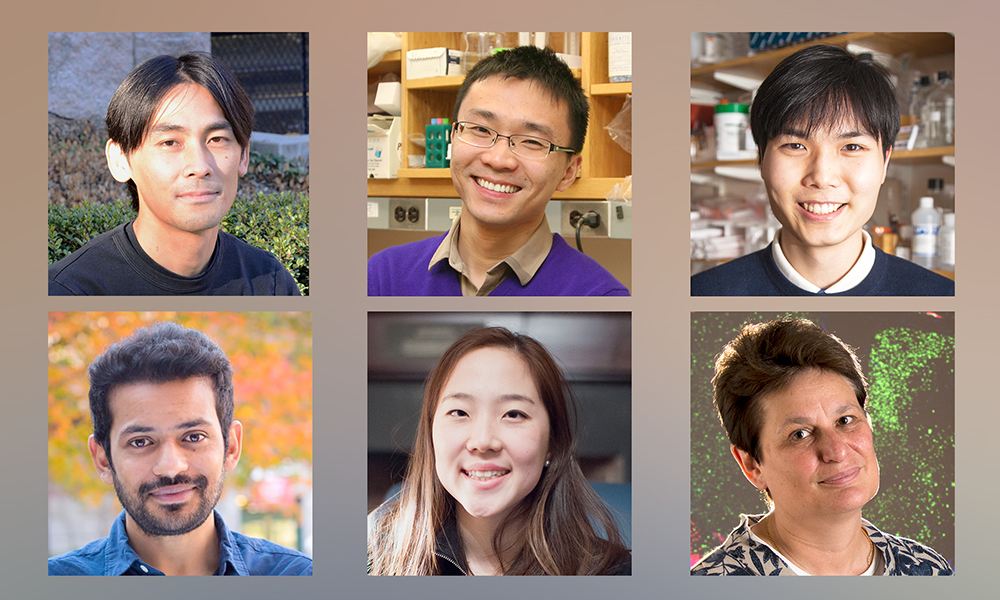Consider an encounter with a parent carrying a baby. Regardless of the baby crying, smiling or sleeping, the sight of a very young infant typically triggers a unique kind of emotion and behavior. In fact, it is not a rare experience as a parent to be approached by friendly strangers who seek to interact with the infant. What sensory cues trigger such strong emotional and nurturing responses toward infants by adults?
Parental care is an integral component of social life of mammals because infants are not fit to survive on their own. Interestingly, some animals such as mice can exhibit instinctive parental behaviors without prior experience. This innate aspect of parental behaviors in mice makes this species a powerful model for the dissection of neural circuits underlying infant-mediated behaviors. While parental studies in mice do not directly translate to the understanding of parenting in humans, we may be able to learn the basic principles of infant recognition using mice.
Parenting is not the only repertoire of pup-directed behaviors in rodents – in fact, virgin males kill foreign pups in order to mate with the pup-deprived mothers and gain an advantage over their male rivals. In 2014, Herbert Wu, a former graduate student in the lab, made the key observation that virgin males lacking the activity of the vomeronasal organ (an olfactory sensory organ responsible for pheromone detection) do not attack pups but instead nurture them (Wu et al. Nature 2014). This result suggested that pup-mediated attack and parenting are differentially controlled by pheromones, and that virgin males and females use different strategies for pup detection because virgin males depend on vomeronasal cues, which are dispensable for parental behaviors by females.
This initial finding raised a critical question – what are the pup pheromones that trigger the attack of pups by males? If pups are recognized for their unique odors, the stereotypic nature of pup directed behaviors could be explained by the activation of a dedicated chemosensory pathway for infant mediated attacks.
Motivated by this hypothesis, we used a high throughput in situ hybridization strategy to look for receptors activated by pups (Isogai et al. Nature 2011). This led us to identify seven pup activated vomeronasal receptors. However, surprisingly, these receptors also detect chemical signals from adults. How could the detection of pup cues lead to infant-specific behaviors, if the activated receptors are shared with adult signals? Did we really identify the correct set of receptors to pups? With a former undergraduate student, Ho-Young Ahn, we confirmed the accuracy of our findings by knocking out two of the seven receptors, which showed that the absence of these receptors significantly reduced attacking and increased parenting in normally aggressive males.
The discovery of the receptors to pup also enabled us to perform the biochemical fractionation of the relevant chemical signals. Strikingly, we identified two novel pheromone molecules associated with pups, a salivary protein called Smgc expressed by pups and adult females, and hemoglobin – yes, the oxygen carrier in the blood, detected by vomeronasal organ as pup-associated cues. The molecular identities of pup-associated pheromones again confirmed that vomeronasal component of pup cues are not specific to pups and potentially transfer from maternal saliva and blood from parturition.
Clearly, our initial hypothesis on the role of pheromones in triggering pup-mediated attacks by males needed to be revised. Chemical cues alone are insufficient to explain the specificity pup recognition. What else then mediate specific information about pups?
To approach this question, we turned to an ethological approach modeled after influential studies by Niko Tinbergen who first identified “sign stimuli” as triggers of innate behaviors. Together with former undergraduate student Vivian Hua, we developed a reconstituted pup stimulus using silicone pup dummies. Astonishingly, these pup dummies triggered naturalistic pup-directed aggression by virgin males.
This reduced system enabled us to examine the non-olfactory component of pup recognition in detail, and indeed, an unexpected parameter emerged as an essential cue for pup-directed attack: morphological features. Using four different types of dummies, we found that unnatural shapes, such as brick shaped objects, do not elicit attacks, even when pheromones are present on the dummies.
Therefore, these experiments demonstrate that specific morphological traits are able to complement the lack of specificity of the “pup pheromones” in order to trigger specific pup-mediated behaviors. In fact, in a classic 1956 study by Frank Beach in rats revealed the multisensory requirements of maternal behavior. Our study thus extends this idea to the recognition of pups by virgin males and provides specific sensory cues that signal “pup-ness.” Future studies would be needed to address if same or different chemical and physical features are important for parental versus aggressive behaviors.
A next important step is to understand the logic of how multisensory information is integrated. For example, given the ambiguous nature of the vomeronasal signals relating to pup cues and the multi-modal information about pups, simple dedicated chemosensory circuits, a hallmark of pheromone processing circuits in insects, may not be applicable to infant recognition in mammals.
This study is a fruit of a collaborative effort over a decade in the Dulac Lab, the Biolabs, Harvard Genome Modification Facility, and the Genomics and Proteomics Facilities at the Bauer Core, and Dana Farber Cancer Institute. We thank many scientists throughout the various stages of this project for their critical contributions.
by Yoh Isogai and Catherine Dulac

Four different pup dummies tested for virgin male aggression.



